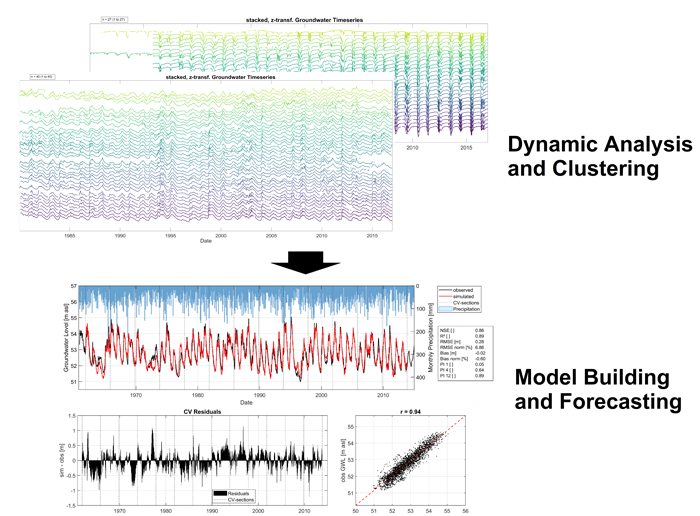
Development and application of machine-learning based algorithms for groundwater level prediction.
- Contact:
- Funding:
Federal Institute for Geosciences and Natural Resources (BGR)
- Startdate:
Oktober 2017
- Enddate:
Oktober 2020
Project description
The reliability of groundwater level modeling and prediction with physical-numerical groundwater flow models is highly dependent on field data availability for model parameterization. Especially for studies at regional and transregional scales, models often fail because of missing or incomplete information regarding the spatial extent of individual geologic formations and their geohydraulic properties. Approaches based on artificial intelligence, such as artificial neural networks (KNN), are an alternative here, as they reduce the problem to an input-output relationship while eliminating descriptions of the physical process. KNNs are capable of learning and mapping linear and nonlinear relationships in complex systems. Reliable prediction of groundwater levels is the basis for, e.g., deriving water availability for drinking water supply and irrigation requirements for agriculture, delineating potential land-settlement zones due to extremely low groundwater levels associated with droughts and/or pumping, delineating areas of potential groundwater highs for transportation infrastructure, buildings, and agricultural land, and developing appropriate mitigation and adaptation strategies.
The aim of the project is to develop a method that enables point-based predictions of groundwater levels in Germany for medium scales and area-based interpretations at small scales (1:1 million, 1:1.5 million). Based on the individually available groundwater dynamics, the time series of all available monitoring wells are first grouped using a machine learning based methodology and then representative monitoring wells are selected. These so-called reference monitoring wells (RM) represent the dominant groundwater dynamics in the respective group and are predicted as a proxy for the group. Subsequently, the KNN-based RM prediction is transferred to other group members. The actual predictions cover time spans from one week to three months (seasonal predictions). Data basis are mainly groundwater data of the state monitoring networks as well as meteorological measurement and modeling data of the German Weather Service (DWD).
